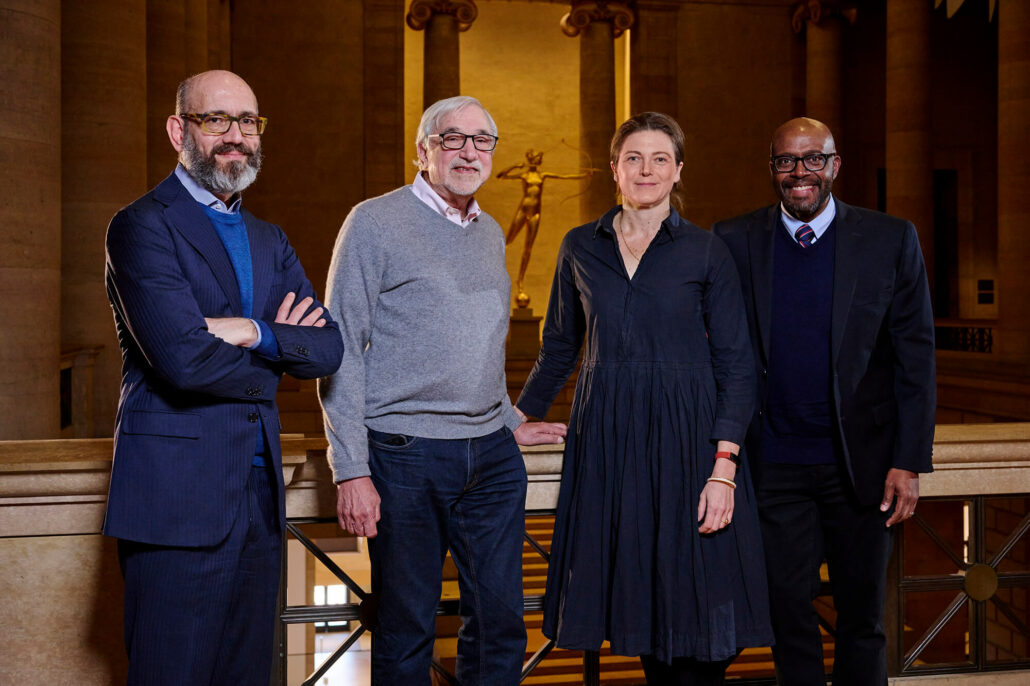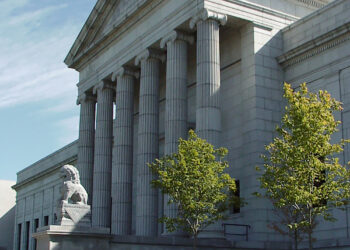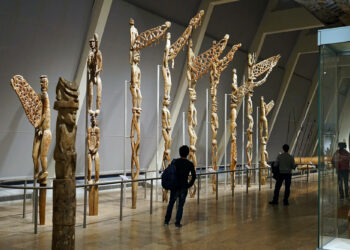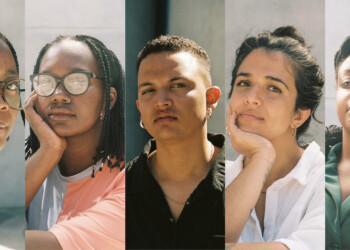Endowed by Trustee Ira Brind, the Brind Center will add two new curators, contributions to the collection, special exhibitions, programs, publications, and career training.

LEFT TO RIGHT: Carlos Basualdo, the Marion Boulton “Kippy” Stroud Deputy Director and Chief Curator, Museum Trustee Ira Brind, Sasha Suda, the George D. Widener Director and CEO and Alphonso Atkins, the Miller Worley Director of Diversity Equity, Inclusion, and Access. Courtesy of the Philadelphia Museum of Art.
Sasha Suda, the George D. Widener Director and CEO of the Philadelphia Museum of Art, announced today that the museum will create a new Center to be endowed by Trustee Ira Brind that will be dedicated to the study, acquisition, and care of art from continental Africa and the African Diaspora. This transformational investment in the curatorial future of the museum will establish the Brind Center for African and African Diasporic Art, with the specific goal of expanding the scope and reach of the collection, a key objective of the newly published PMA Equity Agenda. The Brind Center will also promote scholarship, and organise gallery installations, special exhibitions, public programs, and publications to build broader awareness of the global, historical, and contemporary contributions of the art of Africa and the African Diaspora across time. Two new curatorial positions for this area will be established, including one on the senior level, and a fellowship program dedicated to the training of graduate students in this expanding field, an important goal of the Center.
“Ira Brind’s transformative gifts, both financial and through the gift of his collection, enables the Philadelphia Museum of Art to create new and sustainable infrastructure for the art of Africa and its Diaspora,” stated Sasha Suda. “Brind’s gift will help us build and inspire a fuller, more inclusive art narrative for all Philadelphians and as a national and international destination for art.”
“I am thrilled to support a dynamic field of art history that has important connections to the city of Philadelphia and the global art world,” said Trustee Ira Brind. “The stories we tell through art, and the diversity of our collection, matters. I am excited to be part of supporting new curatorial voices whose lived and scholarly experiences will usher in a new chapter at our museum. I am particularly excited to share the collection and its history with the area’s diverse population.”
Carlos Basualdo, the museum’s Marion Boulton “Kippy” Stroud Deputy Director and Chief Curator, said: “This extraordinary support by Ira Brind opens up amazing possibilities for cross curatorial dialogue, exploration, and collaboration. The wide ranging and deeply influential arts of Africa and its Diaspora are represented across departments at the museum already, ranging from modern and contemporary to American art and from Prints, Drawings and Photographs to Costume and Textiles. We look forward to welcoming the Brind Center’s new curators as leaders in the global conversation that the museum collection embodies.”
The Brind Center for African and African Diasporic Art will be led by a curatorial director, who will be supported by an assistant curator, and an ongoing program of graduate research fellowships. An international search for the curatorial director will begin immediately.
The Brind gift will significantly increase the acquisitions funding to support the sustained growth of works of art collected in this area. The museum will also devote gallery space for the ongoing display of selections from this growing collection of works. Among the Brind Center’s goals will be to promote career development in the field of African and African Diasporic Art.
“Ira Brind ‘s generosity provides extraordinary momentum to our ongoing work to embrace inclusive excellence and institutional equity across all aspects of the museum,” added Alphonso Atkins, the Miller Worley Director of Diversity Equity, Inclusion, and Access at the Philadelphia Museum of Art. “The new opportunities it creates are so important and their impact will be felt far into the future.”
For more information, please visit the Philadelphia Museum of Art.



